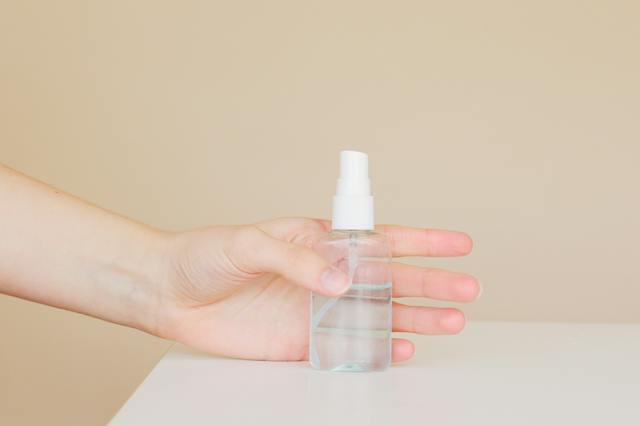Decoding Germ Warfare: The Advanced Science Behind Modern Sanitizers
In a world increasingly conscious of hygiene, the role of sanitizers has never been more crucial. The science of sanitization delves into the sophisticated mechanisms by which modern cleaning agents and sanitizers obliterate harmful microbes, safeguarding our health and wellbeing. This exploration into the realm of sanitization will unravel the complex interactions between chemical agents and germs, revealing how innovation in cleaning products is more than a matter of convenience—it’s a vital component of public health strategy.
The Chemistry of Clean: Understanding Sanitization Agents
Sanitization is a chemical process that significantly reduces the number of germs on surfaces to a safe level, as judged by public health standards. Elevate your cleaning and sanitizing experience with https://cleanmyspacect.com/. It’s a delicate balance between efficacy and safety, ensuring that surfaces are not only clean to the eye but also fundamentally free of pathogenic threats.
Agents of Change: The Active Ingredients in Sanitizers
The efficacy of any sanitizer lies in its active ingredients—the chemicals responsible for disrupting the life processes of microbes. Alcohol-based compounds, quaternary ammonium compounds, and chlorine bleach are among the most effective weapons in our arsenal against germs. Each of these ingredients has unique properties that make them suitable for different sanitization scenarios.
Alcohol-Based Sanitizers: Quick and Effective
Alcohol-based sanitizers are renowned for their rapid action and broad-spectrum efficacy. Ethanol and isopropanol, the alcohols typically used in these formulations, work by denaturing proteins and dissolving lipids, effectively destroying the cell membranes of bacteria and enveloped viruses. Expert house & apartment cleaning service in Loveland, OH: your path to a pristine home. These sanitizers are a staple in healthcare settings and are becoming increasingly commonplace in households.
The Role of Heating Service in Sanitizing Your Home
In today’s world, maintaining a clean and sanitary home environment is more crucial than ever. While many homeowners focus on cleaning and disinfecting surfaces, one aspect that often gets overlooked is the HVAC system. Your heating service plays a vital role in ensuring the safety and comfort of your home by effectively sanitizing the air you breathe. Experience excellence in heating installation with https://alliedexperts.com. Proper maintenance and regular servicing of your heating system not only keep it running efficiently but also contribute to improved indoor air quality. Clean air ducts, filters, and components help remove allergens, dust, and pollutants, creating a healthier living space.
Quaternary Ammonium Compounds: The Gentle Protectors
Quaternary ammonium compounds, or quats, are less aggressive than alcohols but are valued for their persistent action and lower levels of toxicity. They are particularly effective against bacteria and viruses on hard, non-porous surfaces, making them a popular choice for food service and commercial settings.
Chlorine Bleach: The Heavy-Duty Sanitizer
Chlorine bleach is the heavy-hitter of sanitizers, capable of destroying a wide array of pathogens. Its active ingredient, sodium hypochlorite, is highly effective at breaking down the proteins and cellular structures of microbes. However, its strength comes with cautions regarding its corrosiveness and the need for proper dilution and handling.
The Physics of Sanitization: How Sanitizers Reach Germs
The physical action of sanitizers is as important as their chemical properties. The formulation and delivery method of a sanitizer determine how effectively it covers a surface and maintains contact with the germs it aims to destroy.
Formulation Matters: Gels, Sprays, and Wipes
Sanitizers come in various formulations, each designed to maximize contact with germs. Gels are designed to stay in place, prolonging contact time, while sprays offer ease of coverage, and wipes provide physical friction that can aid in the removal of contaminants.
Contact Time and Coverage: Ensuring Effective Sanitization
For a sanitizer to be effective, it must maintain sufficient contact with the surface. This ‘contact time’ is crucial for the active ingredients to penetrate and destroy microbial cells. Proper application techniques, therefore, are not just a matter of efficiency but of effectiveness.
Innovation in Sanitization: The Future of Clean
As our understanding of microbiology grows, so does our capability to innovate in the field of sanitization. Recent advancements are not only improving the potency of sanitizers but also their user safety and environmental impact.
Green Sanitization: The Rise of Sustainable Cleaners
The movement towards green cleaning products has led to the development of sanitizers that are effective against germs while being kind to the environment. These products often utilize biodegradable ingredients, and their manufacturing processes are designed to have a reduced carbon footprint.
Smart Sanitizers: The Integration of Technology
The integration of technology into sanitization practices is paving the way for ‘smart’ sanitizers. These products can provide real-time data on surface cleanliness, adapting their action to the level of contamination detected, and thus optimizing the use of chemical agents.
The science of sanitization is a fascinating intersection of chemistry, physics, and innovation. Modern sanitizers are a testament to our progress in understanding and combating microbial life. They play a vital role not only in our daily hygiene routines but also in the broader context of public health. As we continue to refine the science behind these products, we move towards a future where cleanliness and hygiene are enhanced, with minimal environmental impact and increased safety for all users. This future, built on the foundations of scientific discovery and ingenuity, holds the promise of a world where the risk of disease transmission is significantly diminished through the smart and effective use of sanitizers.

